Ofcom Start Next Major Market Review to Boost UK Gigabit Broadband

The national UK telecoms, media and internet regulator, Ofcom, has today begun the early evidence gathering and development phase for their next major review of the UK’s wholesale telecoms market – Telecoms Access Review 2026 (TAR), which will look to make changes that “promote competition and investment” in gigabit broadband and business connectivity.
In case anybody has forgotten. Ofcom typically conducts a single holistic 5-yearly review of both the markets for Business Connectivity (i.e. Leased Lines / Ethernet and Dark Fibre etc.) and the more residential focused Wholesale Local Access (i.e. wholesale broadband products like FTTP and copper-based FTTC etc.) market. The review also looks at inter-exchange connectivity (IEC) and wholesale access to physical infrastructure (PIA etc.).
The outcome of the last review, which was published in March 2021 (here), introduced a variety of key changes, such as regulation of Openreach that varied by geography, a new Dark Fibre Access (DFA) product, measures to help retire legacy copper-based networks, restrictions on broadband discounts and new Quality of Service (QoS) standards.
All of the above was designed to align with the Government’s efforts to boost 5G mobile and “full fibre” network coverage and investment. Since then, we’ve seen a rapid acceleration of full fibre (FTTP) coverage across the UK and by a wide mix of different network operators, albeit with the likes of Openreach, Virgin Media (VMO2 / Nexfibre) and CityFibre still harbouring some of the biggest plans.
Admittedly the progress, particularly from many newer alternative networks, has slowed a bit over the past year, albeit due more to the worsening economic climate than Ofcom’s regulation (e.g. high interest rates, rising build costs and aggressive competition). But this may also be a factor in how the regulator approaches its next review.
What comes next?
In the past it was often easier to predict the sort of areas that Ofcom might need to focus on and the changes they’d make, but it won’t be quite so straightforward this time. This is partly because the regulator will need to avoid doing anything that might upset the current inward flow of investment, particularly while that flow is under such strain and many of the network builds are only just entering the middle of their deployment cycles.
On top of that, Ofcom’s review seems likely to be occurring at a time of significant political change, which could see a new Government coming into power and one that may have different views about how to approach the thorny issue of market regulation. Suffice to say that all of this inevitably starts with position setting and evidence gathering phase, only after that completes will we get a better idea of the direction Ofcom may look to take.
Ofcom’s Statement
This document sets out Ofcom’s approach and timetable for the Telecoms Access Review 2026 (TAR 2026) – which will replace the regulation that applies to fixed telecoms markets, set by the Wholesale Fixed Telecoms Market Review 2021 (WFTMR). The regulation underpins broadband and business connections, and the connections used by communications providers, including mobile operators, to support their services. The review is designed to promote competition and investment in gigabit-capable networks – the future-proof infrastructure that delivers faster, better broadband to people across the UK.
Our decisions to date have incentivised and supported significant investment. Since 2021, Openreach and many other companies have continued to invest in new gigabit-capable networks. Gigabit-capable broadband is now available to 23.2 million homes (78% of the UK) and more than 17.1 million homes (57% of the UK) can now access full-fibre broadband. Operators’ plans for network deployment over the next three years remain significant.
Ofcom will continue with the same underlying objectives of incentivising investment and promoting network competition. We consider that the long-term nature of network investments requires certainty and stability of regulation. We recognised this in 2021 and therefore set expectations about future regulation, which stands as the starting point for this review. While the previous review set out a 10 year overarching strategy, the market review process requires us to review the relevant markets taking account of recent and prospective market developments.
We recognise the huge strides made by the industry in rolling out full-fibre networks, but we also recognise the challenges facing companies deploying these networks. A key focus of this review will be our approach to promoting network competition. In particular, we want to see network competition continue to develop where this is sustainable and where it delivers benefits to consumers.
We also want to continue to promote efficient commercial deployments to further extend coverage in the remaining, harder to reach areas. Our regulation complements public funding programmes that we expect will remain a prominent feature of fibre rollout in the next review.
However, we do expect that the regulator may have a closer look at Openreach’s approach to FTTP pricing, particularly their “Equinox” discounts and how much flexibility can be allowed in the future. Equally, it’s possible that we may see a return to discussions about wavelength unbundling on FTTP lines, but Openreach will probably also hold up the carrot of an expanded FTTP rollout (potentially 30 million premises by 2030) and encourage the regulator not to inhibit their investment (i.e. the “fair bet“).
In terms of other areas that could see some changes, we’d expect the usual updates to Openreach’s minimum service levels (QoS standards) and Ofcom will most likely have a deeper look at the Hull area. The latter is where alternative networks like MS3 and Connexin have been trying, with little success, to gain access to KCOM’s existing infrastructure in order to run their own fibre and avoid deploying new poles (local campaigners are strongly opposed to “ugly” poles). But KCOM aren’t currently required to offer the same level of Physical Infrastructure Access (PIA) as Openreach and Ofcom might look to change that.
The reality here is that we might have to wait until the review after next (post-2031) before we start to see another major change in the market, not least because that will be moving into a post-copper future and by then we may also have a much better idea of how much fibre coverage alternative networks (AltNets) have been able to deliver (i.e. who is left standing). But there will still be plenty of big changes in this review.
As usual, Ofcom will have the incredibly difficult job of trying to balance the many competing (vested) interests between different operators, and inevitably this will always result in some winners and losers. The regulator expects to publish their first solid proposals for the next review by “early next year“, with a view to publishing their final decisions in early 2026.
Telecoms Access Review 2026 – Strategy Document
https://www.ofcom.org.uk/../telecoms-access-review-2026.pdf
Mark is a professional technology writer, IT consultant and computer engineer from Dorset (England), he also founded ISPreview in 1999 and enjoys analysing the latest telecoms and broadband developments. Find me on X (Twitter), Mastodon, Facebook and Linkedin.
« No Easy Route to FTTP from G.fast on UK ISP Sky Broadband
Leave a Reply Cancel reply
This site uses Akismet to reduce spam. Learn how your comment data is processed.
Privacy Notice: Please note that news comments are anonymous, which means that we do NOT require you to enter any real personal details to post a message. By clicking to submit a post you agree to storing your comment content, display name, IP, email and / or website details in our database, for as long as the post remains live.
Only the submitted name and comment will be displayed in public, while the rest will be kept private (we will never share this outside of ISPreview, regardless of whether the data is real or fake). This comment system uses submitted IP, email and website address data to spot abuse and spammers. All data is transferred via an encrypted (https secure) session.
NOTE 1: Sometimes your comment might not appear immediately due to site cache (this is cleared every few hours) or it may be caught by automated moderation / anti-spam.
NOTE 2: Comments that break our rules, spam, troll or post via known fake IP/proxy servers may be blocked or removed.
Latest UK ISP News
- FTTP (5538)
- BT (3518)
- Politics (2542)
- Openreach (2300)
- Business (2267)
- Building Digital UK (2247)
- FTTC (2045)
- Mobile Broadband (1978)
- Statistics (1790)
- 4G (1669)
- Virgin Media (1625)
- Ofcom Regulation (1467)
- Fibre Optic (1396)
- Wireless Internet (1392)
- FTTH (1382)





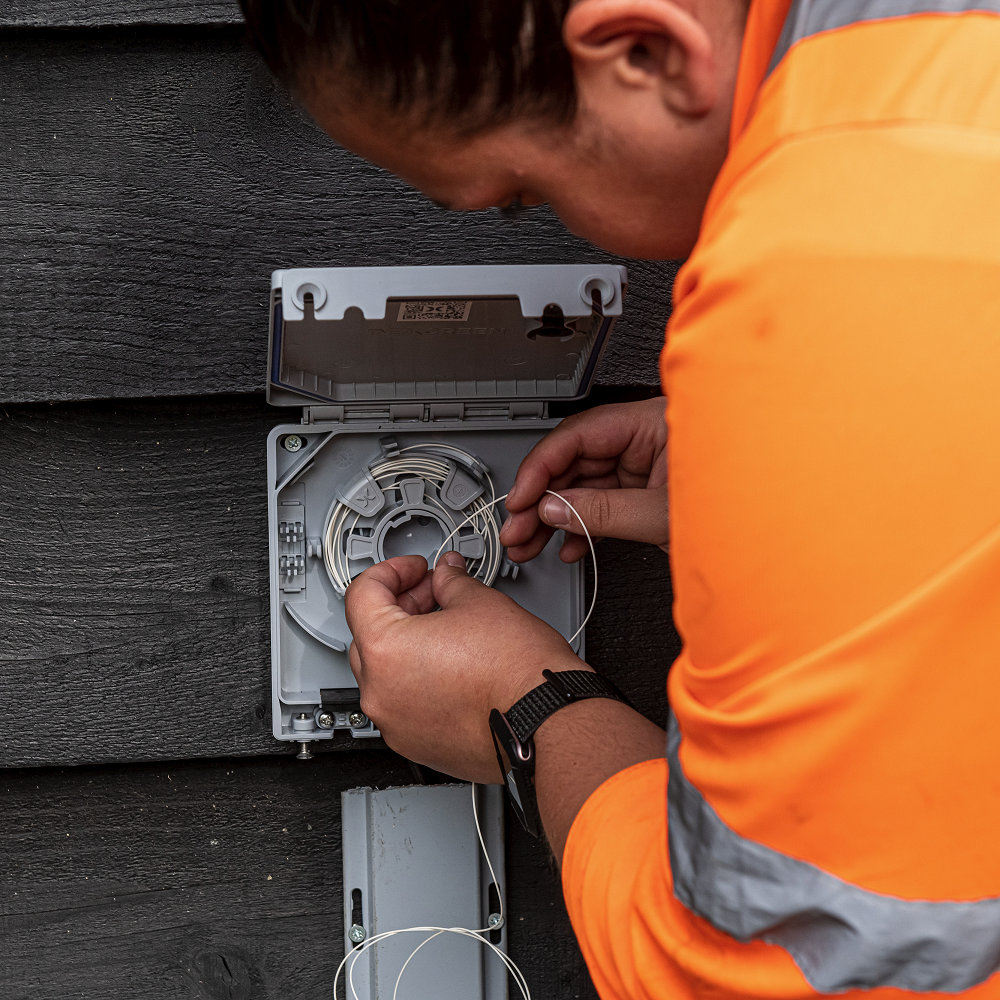


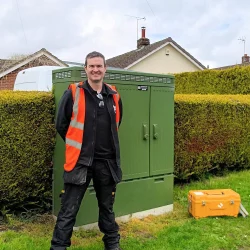
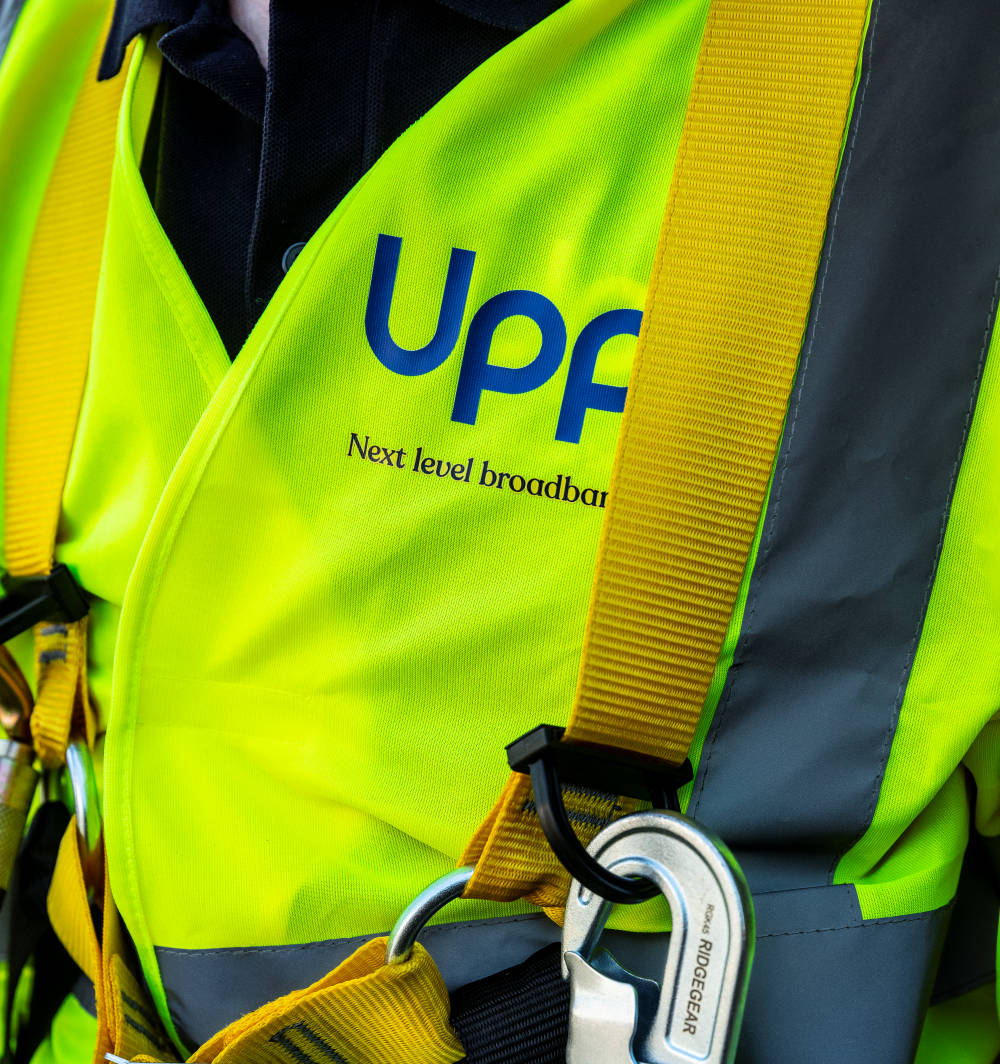

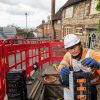

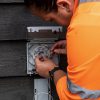








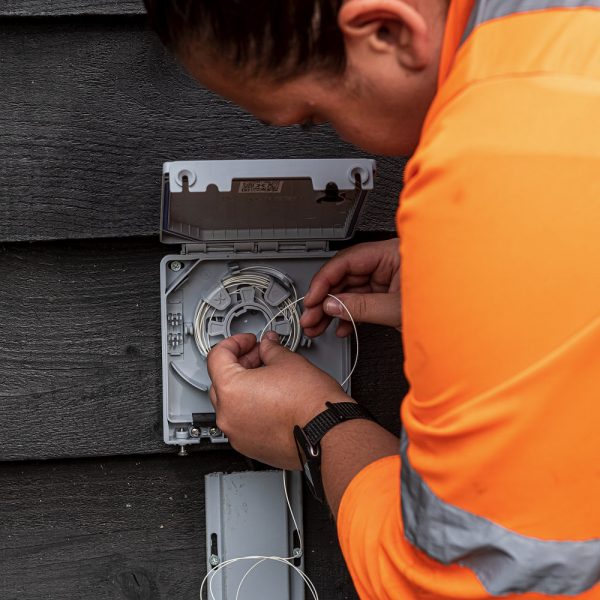
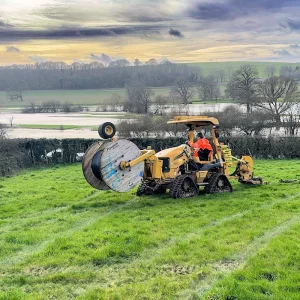

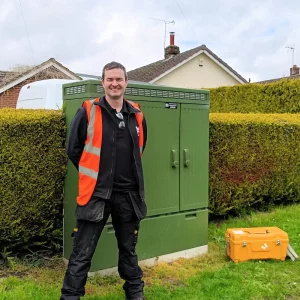































How about finding out what the customer actually wants rather than dictating from on high. Does the customer want infrastructure competition? Judging from what I’ve seen locally Openreach are still getting the lions share of new fibre installs even though 2 altnets are available in the area. So I would say probably not that bothered.
Some customers would like to actually get access to Gigabit – let alone see them moving on with faster services.
I think there are issues of consumer awareness there that merit a deeper dive. You could phrase that question differently and ask if people don’t want infrastructure competition and would rather go back to the old model, where two players dominated, leading to higher prices, less choice and slower speeds etc.
Personally speaking, I welcome the added infrastructure competition and choice, but I see that a lot of people don’t even realise when that extra choice is available. But this also overlooks that the greatest challenge is still in expanding coverage to all the slow spots.
Competition is only any good if there’s a decent take up. Swish round here have been pretty proactive knocking doors and I guess most altnets do likewise. I would still suggest that once one fibre install has been done many customers will not be wanting 2nd or even 3rd installations done to change ISP.
‘I would still suggest that once one fibre install has been done many customers will not be wanting 2nd or even 3rd installations done to change ISP.’
The amount of homes with Virgin Media omniboxes on them says otherwise. Many people will tolerate a second drop if the product is right.
What did you have in mind instead of infrastructure competition? I would have preferred dark fibre to every premises and think that’s the only way to preserve what we have in terms of innovation without competing infrastructure but that seems unlikely. There’s also the question of who pays for it.
Asking people what they want deals with the outcome only. None of us are qualified to decide on the best way to get there.
I think 2 connections is okay. It is manageable.
I can fit an OR ONT next to my Virgin Media isolator quite easily. However, if another Altnet came around I think I’d have no space left to run the cable internally to the ideal place.
I guess new builds with comms spaces might fair better.
@XGS
The Virgin boxes were installed to supply a TV service when the alternative was a satellite dish on the side of your house and it was the only cable TV service. It obviously wasn’t thought then that installing a second cable TV service in competition was a viable option then….
Many properties with satellite dish and cable box even though it’s more infrastructure to accomplish largely the same thing. At least one altnet is on record as saying VM areas are great for them.
You may be extremely adverse to a second box on your home however many are not, especially when they are being reached via Openreach duct or pole.
@XGS
Time will tell. As we’ve yet to see altnet make a profit (as far as I know) we will have to wait to see who makes a profit, who gets taken over by who and who just disappears leaving miles of dead fibre behind them.
They’re building out their infrastructure. Not a huge surprise they aren’t profitable. Openreach’s FTTP build won’t be profitable for years either.
As I read your reply I saw a Netomnia install on a house nearby. We’ve never had anything other than FTTP here, new build, yet Netomnia are making steady inroads.
A reminder that, give or take, about 12% of properties per year change their Internet provider. I believe it was you that mentioned that nearly all of the Openreach FTTP installs in your area were ISPs upgrading their customers, not people churning? Where altnets have been around for a while they are showing similar levels of uptake to Virgin Media’s Lightning builds, 20-30% after 3 years.
12% churn is great if it means that everyone changes over 8 years. In reality it’s probably mostly the same 30-40% repeat churn. If that’s the case then how many people will stay with the altnet at the end of their initial contract? Most people I know have literally been with the same provider for years.
Their call if they’re happy almost certainly overpaying for their Internet service. New infrastructure builds or not quite irrelevant if people want to stick with the same retail provider in perpetuity.
Maybe they can get CDS (Connecting Devon & Somerset) to publish regular updates on progress…
And getting their contracted providers to provide the monthly updates they’re committed to.
> But this also overlooks that the greatest challenge is still in expanding coverage to all the slow spots.
Exactly. We have just one method of getting broadband, and that is FTTC (ignoring satellite). Nothing on the horizon either, and I live in an 80s built urban housing estate in a city. Also, we have patchy to non-existent 4G and no 5G anywhere.
I sincerely wish the priority was on getting at least 1 provider to every household. In theory, every premise just needs 1 wholesale “dark” fibre, as someone commented. That way you are avoiding the need to dig up the same streets every few months. So utterly wasteful.
@Sonic
In France this is what has happened. A fibre is run from each premise back to the street cabinets as a regulated monopoly with regulated pricing then each network operator runs their cables to the cabinet and it’s then a matter of switching supplier is a matter of unplugging from 1 network then into another. It’s too late now to do that here unfortunately.
we could do it, just in a different way – by giving each operator their own wavelength(s) on the cable and use tunable optics in the ONT/OLT. In theory that means you could also have multiple ONTs from multiple operators running off the same cable.
A subset of this is already done with operators that are running GPON and XGSPON together.
that has the further benefit of keeping everything inside the warm cosy exchange and eliminating complexity in the street.
Tunable optics are way more expensive than regular: hasn’t happened anywhere else in the world, not happening here.
Fern Trading / All Points Fibre are continuing their build in your city. They seem to be having to spend a fair amount of time and money digging new ducts and drops there which might explain why no-one else is building there at the moment and the pace of their deployment.
Nexfibre are all over the country but not there, Openreach are all over the country but not there, one actual altnet is there running through a pretty slow and painful build.
As far as the mobile coverage goes that usually ends up at rejections of planning permission for masts.
I suspect you’d be more enthused by infrastructure competition if there were three networks available to you. 🙂
I missed out a bit on my tunable optics comment: as far as I’m aware OLTs to actually do this wavelength unbundling don’t actually exist. Each operator can’t have their own OLT feeding the PON.
By tunable I meant “not using a standard wavelength”, not a device that can be adjusted on the fly in software – though if there was a market demand for such a device in the PON world I’m sure prices would come down! It is already in use for PTP and transmission networks of course.
That very much *has* been done. AT&T has had to use it in areas where they wanted to re-use trunk fibre from a 2000s fibre to the kerb network, but without disrupting existing services. So they put the PON on a different wavelength and require a different variant of SFP/ONT in those areas.
Tunable optics literally means optics whose wavelengths they’re transmitting and receiving on may be changed via software, Ivor. If they can’t be changed they aren’t tunable.
If you’re talking about running on non-standard wavelengths with static optics fine: what’s your solution for that each additional operator on a PON requires a port into the PON at the exchange, meaning additional splitters and changes in optical power requirements in terms of both sensitivity and launch power?
Sky, TalkTalk, Vodafone and CityFibre all want to light a PON you’ve just taken 9dB off the optical power end to end so either need that compensated for with higher launch power or more sensitive optics.
The AT&T stuff is a closed network operator running on a non-standard wavelength in limited cases. That certainly happens: XGSPON overlaps with 10GBase-BX, GPON with 1000Base-BX.
@XGS:
I’m aware. Pretty much the whole area has been cabled up by Giganet/APFN but they hit some problem on our street and promptly walked away. Not sure if they are ever coming back; probably not. I tried contacting them but I cannot get past boilerplate responses. Cannot speak to anyone in the build team, they will tell me nothing. Very frustrating.
Not 50 metres from us, most houses have a choice of at least 2 gigabit capable connections – Virgin coax or Giganet.
I’m not sure why Winchester is all that different from any other small town/city. We have a mix of streets with poles and streets that are fully ducted, same as any other place. Why would we be unique in being more difficult or expensive? Giganet’s rollout is quite patchy. They don’t have a large team on the ground, so to speak.
In terms of 5G or even better 4G, I have contacted the council to get an idea of planning rejections and so on, but I’m not making a lot of progress. Wrote to the MP, got nowhere.
XGS:
I get you feel the need to think you’re always right – but it seems you’ve answered your own question and haven’t been able to prove me wrong. The idea of a shared PON – and yes, software controlled optics too – is not an insurmountable challenge if the market called for it. Just like every technical innovation.
You’ve also negated the “muh power levels” argument in attempting to make a distinction with AT&T. The same optical challenges apply to them and the multiple separate wavelengths they have on their PON, as it would if they were operated by separate companies.
Other companies do something similar, eg Verizon’s FTTH carries RF TV at another wavelength and as I understand it they’ve lit up XGSPON at another, all on the same PON, all working simultaneously, and the world hasn’t ended. I’m sure it doesn’t count in your mind because it’s the same company though.
We deem to have gone down the worse possible option route. Yes in theory there are in many cases a number of competing providers but that comes at a high cost and on a practicable basis changing providers is difficult, A far better approach would have been to allow another wholesale provider or perhaps 2 so you would have a choice of providers and also a system where you do not need a new ONT every time you change provider and also the ability to keep your landline number plus no down time with switching
At present the competition is more of an illusion than reality and I do not see the current situation changing much until the market consolidates to a few big players. What we have at the moment is a big mess
Absolutely 100%
The problem there is who decides what ONT is fitted? OR, for example, are fitting inferior ones to say CF and most altnets. You should just be allowed to remove unneeded equipment when you switch to a different infrastructure supplier and re-use the same hole in the wall. Maybe you are already, I don’t know.
Your solution to the illusion of competition is to go back to where we were before LLU was a thing, Bob? We all get whatever the incumbent deigns to sell us, how they deign to sell it?
The benefits of the alternative networks relative to when it was just Openreach or Openreach/Virgin Media in half the country as a duopoly are clear. Don’t need to be passed by an altnet to enjoy the benefits either: no way Equinox would be a thing without them, prices being lowered.
On the more local side I actually quite like having the choice of asymmetrical but always reliable Openreach, symmetrical GPON with XGSPON coming from CityFibre and up to 8 Gbit from Netomnia. Going by how Netomnia are selling in the area it seems I’m not alone, even in my zero-copper estate.
Downtime may be mitigated even across networks, hardly anyone cares about landline numbers anymore so not clear that should be a priority, however if it ever actually goes live https://totsco.org.uk/ should help with switching across networks quite a bit.